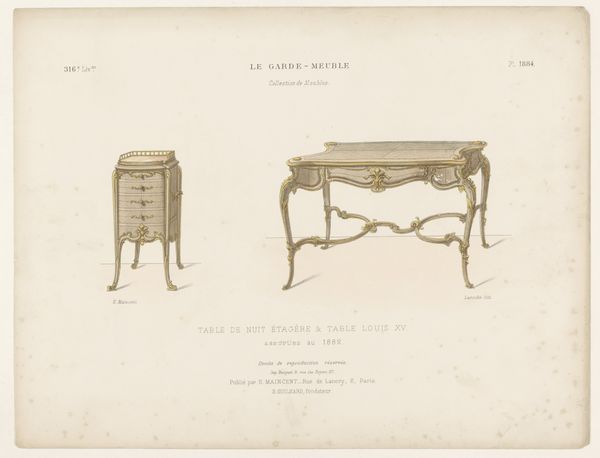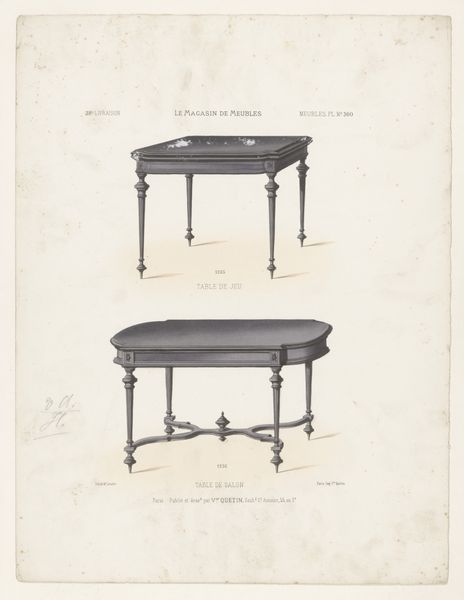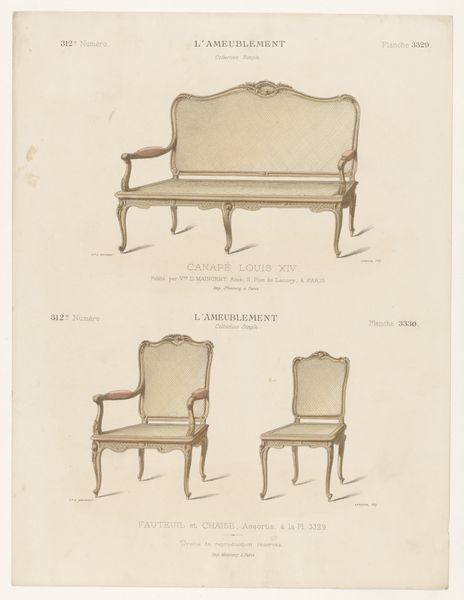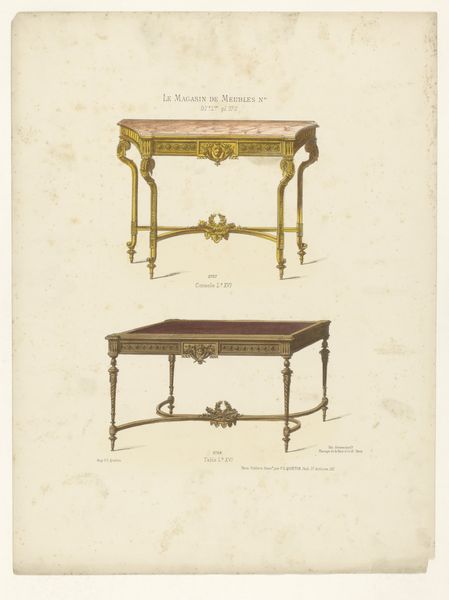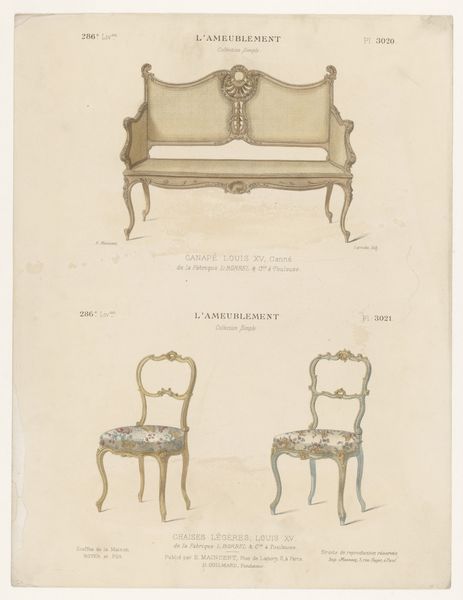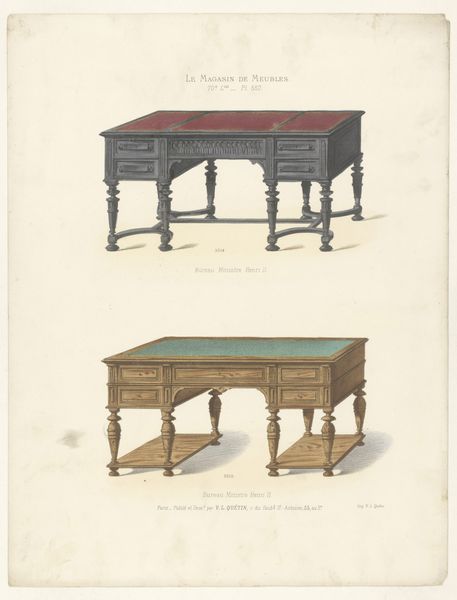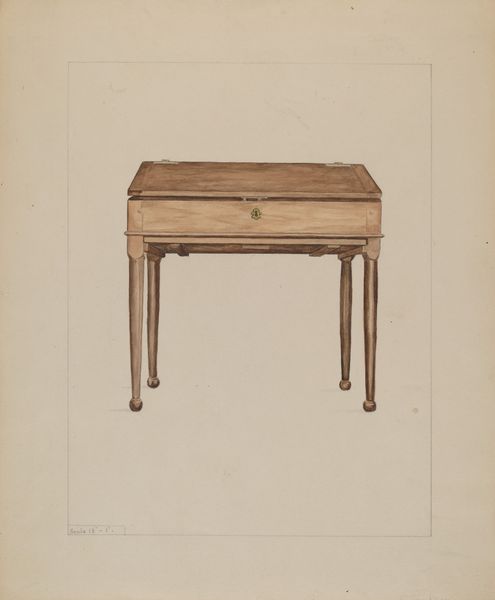
drawing, graphic-art, print, engraving
#
drawing
#
graphic-art
#
table
#
neoclassicism
# print
#
furniture
#
decorative-art
#
engraving
Dimensions: height 359 mm, width 278 mm
Copyright: Rijks Museum: Open Domain
Editor: This print, “Twee salontafels in Engelse stijl,” or "Two Coffee Tables in the English Style," by Léon Laroche, likely made between 1895 and 1910, shows two nearly identical tables. They feel so formal and posed, somehow. What do you make of them? Curator: Well, I immediately think about the rise of industrial capitalism during this period and the shift towards consumer culture. These prints, seemingly benign, served a key function: promoting a certain lifestyle and, with it, a certain vision of class and social aspiration. Editor: So, like advertisements, in a way? Curator: Precisely! Consider how the title explicitly links the style to “Englishness." This connects the furniture not just to a geographic location, but to an aspirational identity laden with social meaning tied to class, colonial power, and gender expectations during the late 19th and early 20th centuries. These aren’t just tables, they're signifiers. Editor: Signifiers of wealth, and a particular idea of "English" refinement, perhaps? Curator: Absolutely. The neoclassical style itself, with its clean lines and suggestion of historical importance, harkens back to a period loaded with gendered ideas. It creates a "refined" space for women's work within the home. How do these prints play a role in maintaining power structures? Consider where these images would be displayed. Were they affordable to all members of society? Who was excluded from that idealized image of domestic life, and what kind of work allowed such luxuries to exist in the first place? Editor: I never considered that the intended function might be as a kind of blueprint for constructing a domestic ideology! It’s amazing how much is communicated, not just by the object itself, but its representation and distribution, too. Curator: Exactly! Everything, especially something seemingly as straightforward as furniture, can be read within complex cultural narratives.
Comments
No comments
Be the first to comment and join the conversation on the ultimate creative platform.




